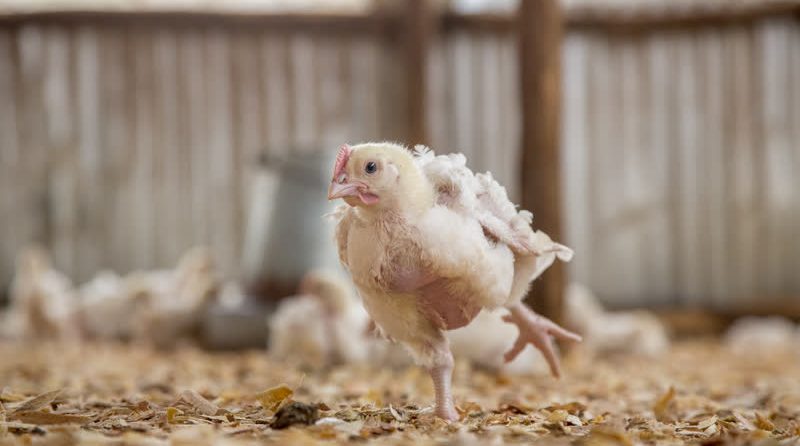NOTE: Please read our follow up article here – thankfully this practice will not be implemented.
The world has a problem. By 2050 it is estimated there will be 9.5 billion people in the world to feed and with incomes increasing worldwide the demand for meat will be higher than ever.
Poultry is currently consumed in quantities larger than any other type of meat worldwide and last year we produced over 200 billion kilograms of poultry worldwide. It’s unsurprising then, that there is growing concern over where we are going to raise chickens and other poultry birds when already over 2.75 billion hectares of land is dedicated to raising animals for food.
However, architecture André Ford has come up with a solution to the problem that will not only increase the number of chickens that are able to be farmed per square metre but will, in his opinion, reduce the suffering of the chickens dramatically. He calls it the ‘Headless Chicken Solution’ and he proposes that the cerebral cortex of the chickens be removed so that they are ‘desensitized’ to the horrors of animal farming.

Ford’s idea is inspired by philosopher, Paul Thompson, who has suggested that when chickens are blind they are less sensitive to being crowded together in comparison to ‘normal’ chickens. Thompson’s theory is called ‘The Blind Chicken Solution’ and right at this moment there are chickens who are being brought up in laboratories that have been ‘developed’ to be blind from birth.
The findings report that they originate from chickens that have been blinded by ‘accident’, as if accidental blindness of parent chickens makes the idea of laboratory chickens who have been purposefully bred to be blind entirely moral.
Ford’s idea goes several steps further, however, by proposing that not only should the cerebral cortex be taken away but that the chicken’s feet should also be removed so as to create as much space as possible. This process would entirely disable chickens, who would then hang in vertical pods and be fed through tubes. Their excrement would also be collected via tubes. Ford has also suggested that electric shocks be used for muscle stimulation. This process would allow the chickens to continue to grow but Ford believes they would be entirely unaware of what was going on around them.

The architect has compared this solution with lab grown meat but believes his idea would be better because lab grown meat developers are currently struggling to work out ways to stimulate blood flow.
Lab grown meat is a process whereby stem cells are harvested from an animal and are multiplied in a lab until there is enough of them that they turn into muscle fibres. The cells are then manipulated to look and taste like meat products. This process has many vegans divided and ultimately right now we don’t understand the long term health effects of lab grown meat.
The difference between the two processes, however, seems to be a lot greater than that. Where lab grown meat exploits a small number of animals originally in order to take stem cells, the vertical chicken idea would involve disabling billions of animals a year just to satisfy the taste buds of human consumers.
Many vegans and meat eaters alike would agree that this approach to farming is entirely immoral, especially in an era where meat eaters are looking for more ethical ways that they can obtain animal products. However, Ford also claims that his solution is no more horrific than what chickens are already put through on poultry farms.
 The comment seems a little dismissive of the severity of the acts that Ford is suggesting humans perform on farmed chickens and it is nearly impossible to put a hierarchy on pain. However, if this is seen as the only option for ‘protecting’ chickens from the reality of farming then it highlights the need for education and transparency over food production.
The comment seems a little dismissive of the severity of the acts that Ford is suggesting humans perform on farmed chickens and it is nearly impossible to put a hierarchy on pain. However, if this is seen as the only option for ‘protecting’ chickens from the reality of farming then it highlights the need for education and transparency over food production.
Thankfully there have been no suggestions that Ford’s ‘Solution’ will be put into practice. It seems, however, that the need to go to such great lengths to make chicken farming viable might just be another reason that veganism is the diet of the future.
Image Credits: The Washington Post | Feedstuffs | World Animal Protection
[/et_pb_text][et_pb_social_media_follow _builder_version=”3.0.53″ saved_tabs=”all” link_shape=”circle” url_new_window=”on” follow_button=”on” background_layout=”light” global_module=”4820″] [et_pb_social_media_follow_network social_network=”facebook” skype_action=”call” url=”https://www.facebook.com/livekindlyco/” bg_color=”#3b5998″]

